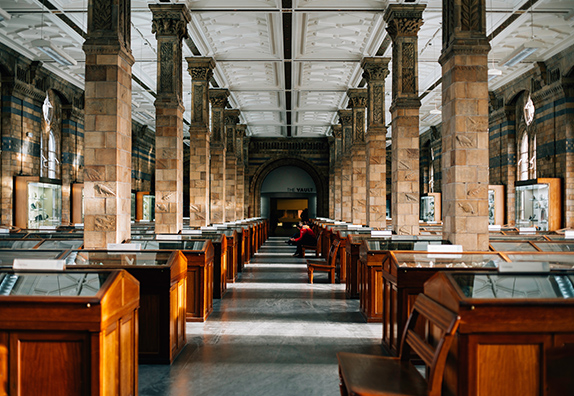Museums & Archives
| Precious artworks and precious archives are vulnerable to long-term damage from urban pollution gases. Environmental forces play an important role in establishing the preservation characteristics of artifacts in a conservatory. Museums and library curators have known for many years that a deficient environmental control strategy within a museum will result in severe damage or degradation of the materials on display or in long/short term storage. As a result, typically four critical factors must be considered when attempting to control the environmental impact on precious artifacts. Temperature, humidity, particulate concentrations, and gaseous pollutants must be controlled so as to achieve a stable, non-hazardous environment. Most archival storage facilities constructed today, include control techniques integral to their design for the reduction of undesirable gases and particulates. Strong oxidants such as ground level ozone, and acid gases including sulphur dioxide and oxides of nitrogen are present in outdoor air. |
 |
Precious artworks and precious archives are vulnerable to long-term damage from urban pollution gases.
Environmental forces play an important role in establishing the preservation characteristics of artifacts in a conservatory. Museums and library curators have known for many years that a deficient environmental control strategy within a museum will result in severe damage or degradation of the materials on display or in long/short term storage. As a result, typically four critical factors must be considered when attempting to control the environmental impact on precious artifacts. Temperature, humidity, particulate concentrations, and gaseous pollutants must be controlled so as to achieve a stable, non-hazardous environment. Most archival storage facilities constructed today, include control techniques integral to their design for the reduction of undesirable gases and particulates.
Strong oxidants such as ground level ozone, and acid gases including sulphur dioxide and oxides of nitrogen are present in outdoor air.

Acidic gases such as sulfide, nitrogen oxides and halides can not only corrode metals, but also decolor and fade organic cultural relics, thus changing the original appearance of cultural relics and causing damage to cultural relics. These chemicals when present in a humid environment will cause severe damage to any cellulose based material.
In addition, some harmful microorganisms floating in the air or embedded in dust, such as bacteria, actinomycetes, mold, etc. can cause the biological corrosion of the cultural relics collection. The content of pollutants in the museum is not fixed, which is easily affected by external conditions. It is not only related to the internal factors of the museum, but also shows a positive correlation with the air condition outside the museum.
Natural damage to cultural relics and important documents in museums and archives is not caused by a single factor, but by a combination of temperature, humidity, particulate matter, gaseous pollutants and bacteria. In view of the environmental characteristics of the cultural relics in the collection, IIECC put forward protection measures and overall solutions, and protected these objects in the coming centuries.
Products & Services
-
Indoor Air Quality Series
Engineered to purify a wide variety of odorous and contaminates from indoor air.
-
Corrosion Control Series
Engineered to remove acid gases from the polluted gas stream. It provides longer life for industry equipments and machineries through filtering out the corrosive contaminants in airstream.
-
Recirculation Purification System
Recirculation Purification System (RPS) is an independent and complete air purification equipment. It is designed to be placed indoors, and the air is circulated and purified to protect people from indoor air pollution, and make sure that the electronic
-
MAHS Series
MAHS offers total design flexibility for the control of particulate contaminants as well as gaseous contaminants.
-
Air Treatment Service
Air Treatment Services is a basic service provided by IIECC to identify and effectively resolve air quality issues in the customer's environment.
-
Corrosion Monitoring
Corrosion monitoring is an accurate and reliable method of evaluating air quality in a controlled environment. Corrosion analysis in the laboratory can provide data on the type and magnitude of gas contamination present in the environment, thereby customi









